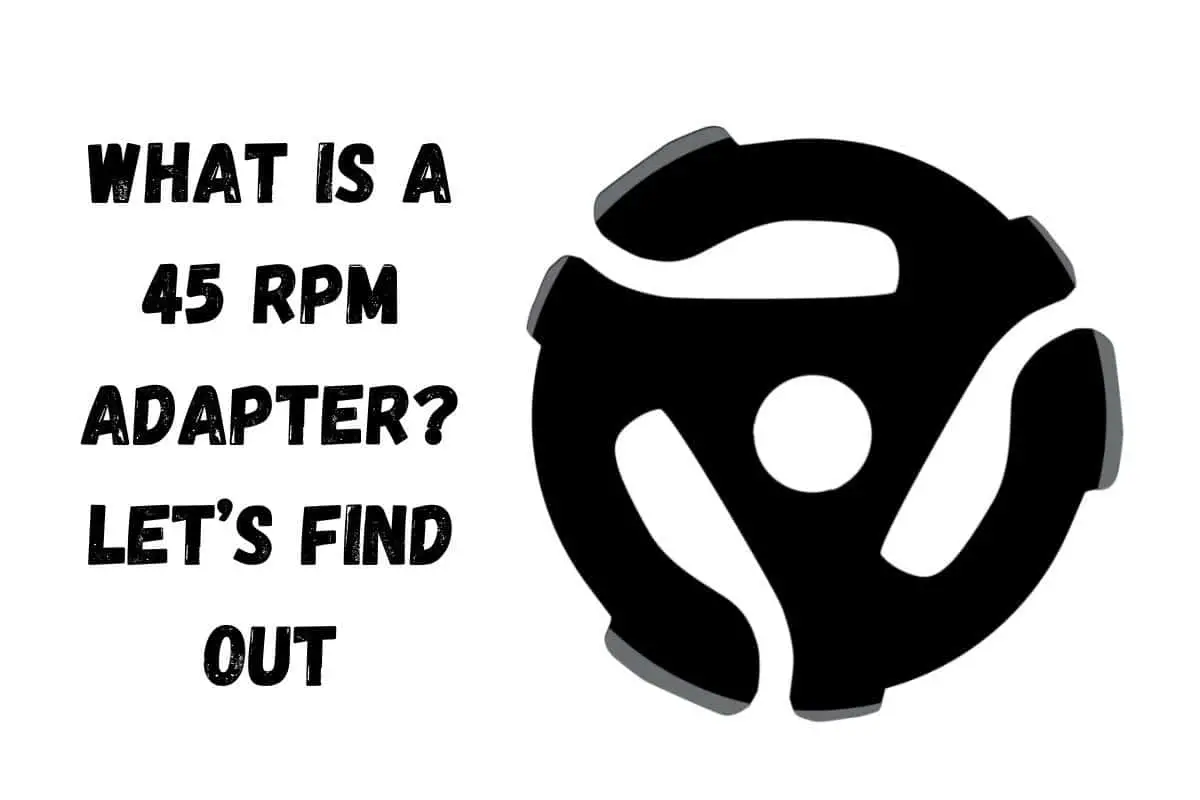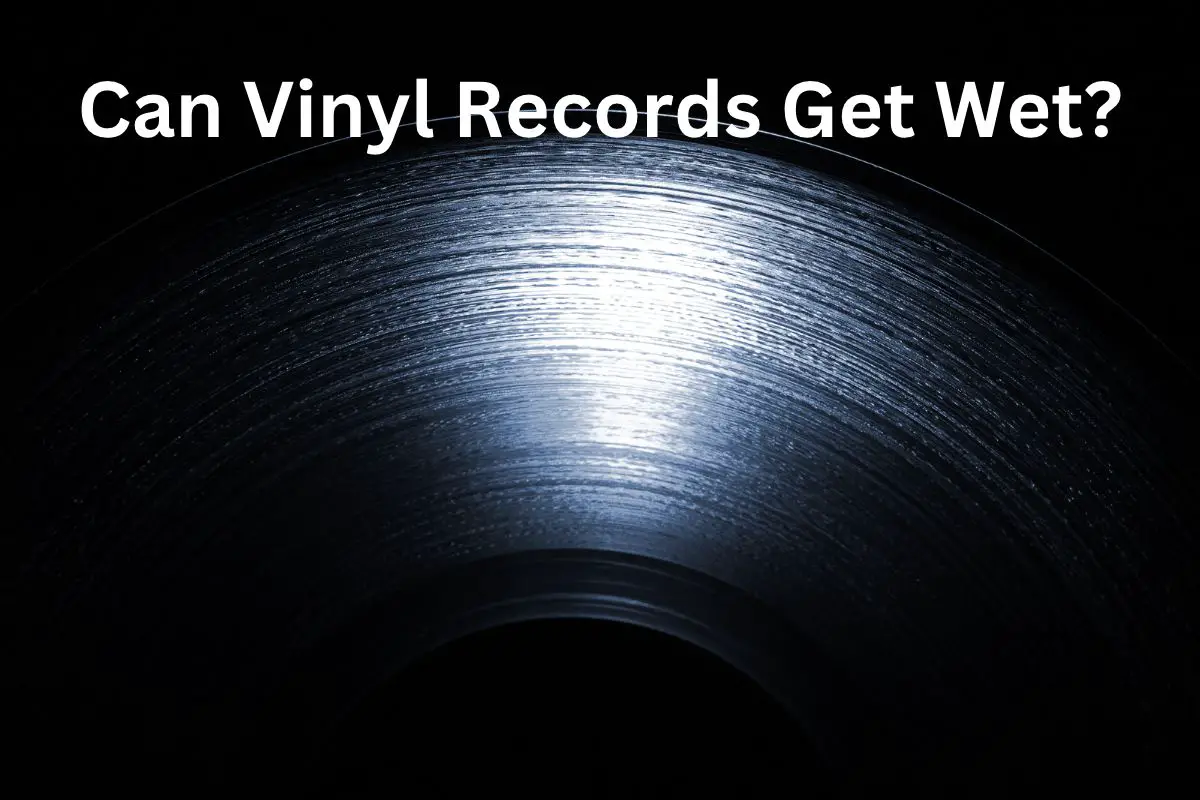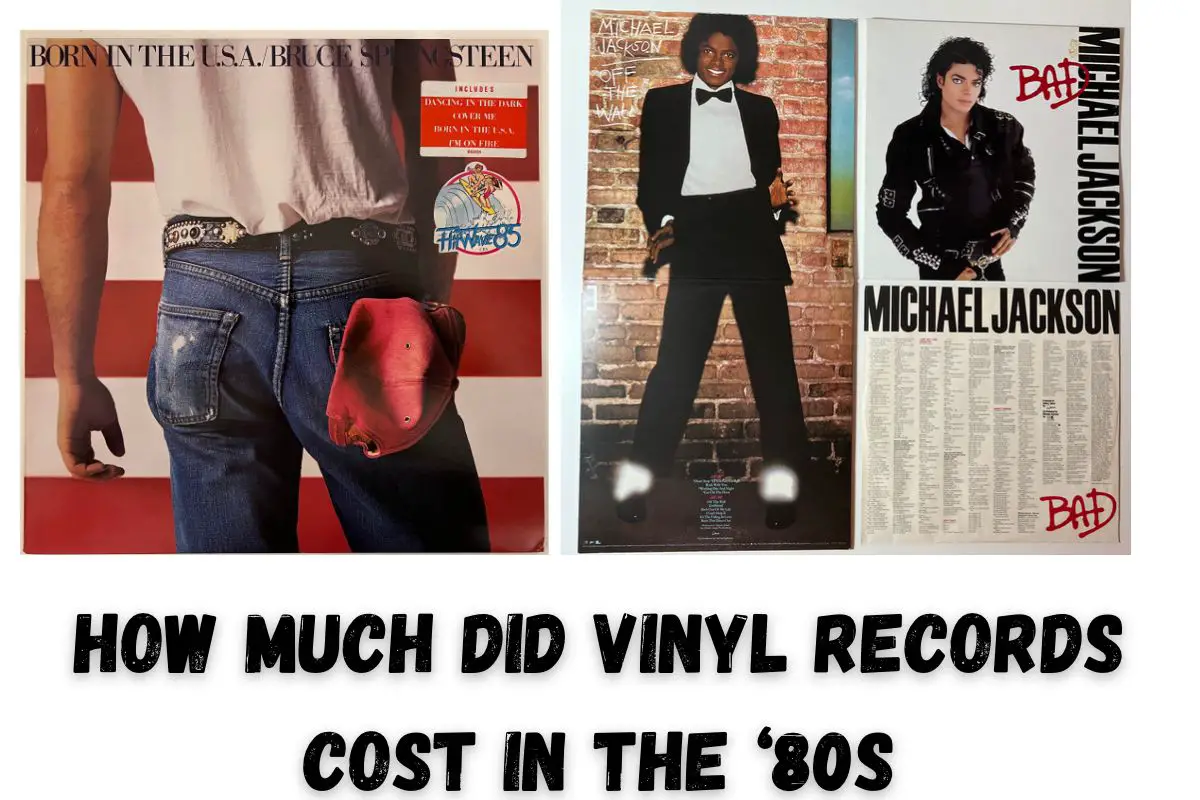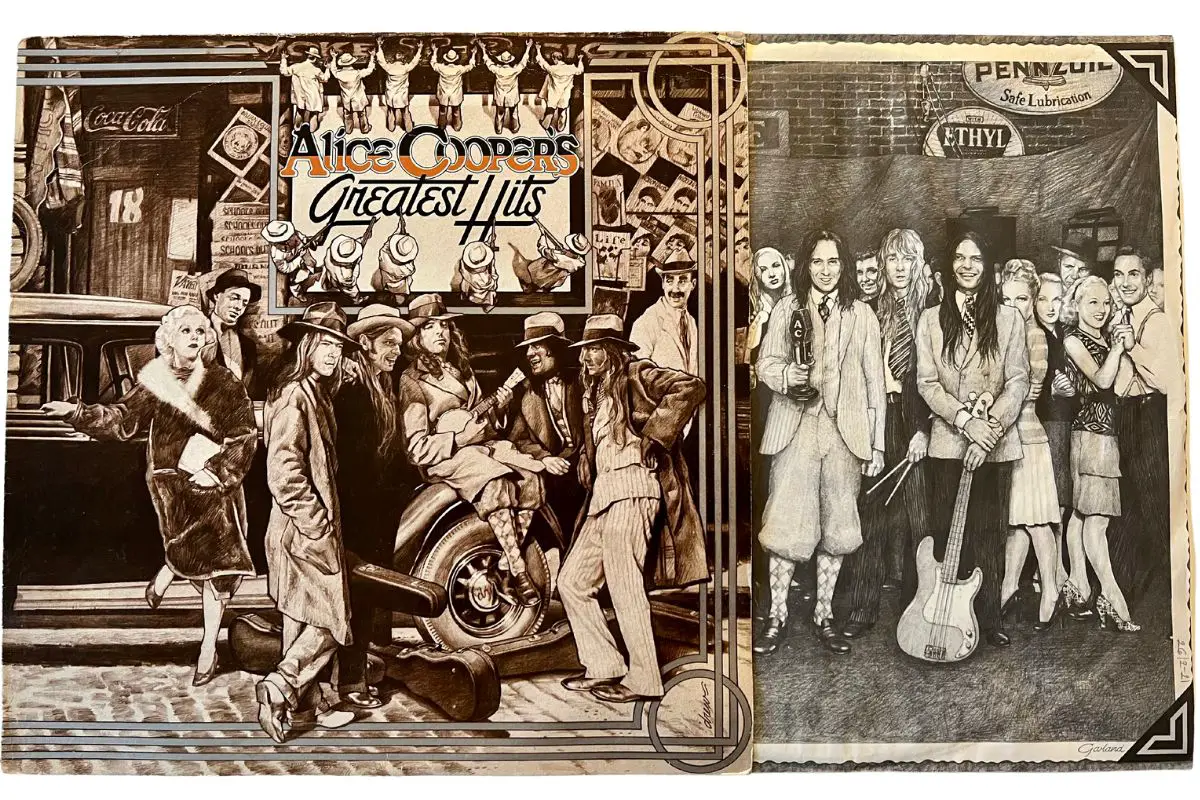This post contains affiliate links.
If you’re interested in vinyl records, you may have encountered the term ‘45 RPM adapter’. Knowing what it is is essential because you might need to use one when playing records. So what exactly is a 45 RPM adapter?
A 45 RPM adapter is a device you place in the hole of a record, so it stays in place when in use. You should use a 45 RPM adapter on all 45 RPM records with a hole that’s 1.5 inches (3.81 centimeters) wide. Most 45 RPM adapters are plastic or metal. You can buy one in any music store.
This article will discuss what a 45 RPM adaptor does. It will also discuss the essential information you should know and what happens when you don’t use a 45 RPM adapter.
If you only want to buy an adapter, check out my two favorites (from Amazon):
- Solid Aluminum Dome 45 Adapter
- (10 Pack) Glow in the Dark/Glowing Plastic 45 RPM 7 Inch Vinyl Record Adapter/Adaptor – 7″ Inserts
Table of Contents
What Does a 45 RPM Adapter Do?
A 45 RPM adapter ensures your 45 RPM vinyl record stays in place and doesn’t move around while it’s in use. Since the center hole on many records is too large for standard record players, an adapter is often necessary. Using an adapter ensures the record doesn’t get damaged.
Most adapters are easy to put on—they click onto the record in the center, and you can place the record on the player. You’ll notice that the record will remain steady once it starts spinning if you use a 45 RPM adapter.
Plus, it’s super easy to put one on. All it takes is a few seconds, and you can use the same adapter on all your 45 RPM records with large center holes.
45 RPM Adapter Essential Information
Now that you know more about what a 45 RPM adapter does, it’s good to learn more about these valuable devices. For example, it’s essential to understand that not all 45 rpm records require an adapter.
Additionally, you should only use a 45 RPM adapter on a 45 RPM record. For example, you wouldn’t need to use a 45 RPM adapter on a 33 RPM record.
Below are some of the essential things you should know.
45 RPM Adapters Are Not Always Necessary
Although they’re usually necessary, there is one instance when you won’t need to use a 45 RPM adapter on your 45 RPM record—when the hole is smaller than the standard 1.5-inch (3.81 centimeters) one.
Only vinyl records with a 1.5-inch hole in the middle need a 45 RPM adapter. So if you have a record with a smaller hole, you can place it right on the record player without worrying about damage or movement.
If you’re unsure, you can measure the hole before trying to use an adapter.
They Can Be Plastic or Metal
45 RPM adapters come in two primary materials: plastic and metal. Generally, the plastic ones are cheaper than the metal ones, so you should use one of them if you’re on a budget. However, metal adapters are more sturdy and longer-lasting.
You should be aware that although metal adapters are more sturdy, they can be too sturdy. According to the University of Missouri-Kansas City, some old metal adapters (like the Webster-Chicago 45 RPM Adapters) can damage records. So it would be best if you were extra careful when removing such adapters.
If you take good care of it, a plastic 45 RPM adapter should last a long time. They also come in different shapes. For example, you can find cone and flat disc shapes.
You Can Keep the Adapter on the Record After Each Use
It’s OK to keep the adapter on the record after using it. Of course, taking it off usually makes more sense if you only have one and listen to many different records. But if you have numerous adapters and don’t want to move them around and take them off each time you finish using a record, keep them on!
Keeping the adapter on shouldn’t damage the record, and it will ensure you don’t lose it. If you want to remove it after each use, store it somewhere safe where it won’t get lost or damaged. Adapters are tiny, so they’re easy to lose!
What Happens if You Don’t Use a 45 RPM Adapter?
If you don’t use a 45 RPM adapter, your record won’t be steady on the player. You’ll notice it moving around, and it may get scratched and damaged over time. It’s vital to use an RPM adapter to avoid damage.
You may be wondering if you can remove the 45 RPM adapter once the record is playing, but you shouldn’t do that. If you remove the adapter, the record will likely start moving around—this won’t necessarily affect the sound, but it can cause scratching (which you certainly want to avoid)!
Once the record is playing, you should leave the 45 RPM adapter attached to the vinyl record until you stop using it.
How To Use a 45 RPM Adapter
Thankfully, using a 45 RPM adapter with your 45 RPM record is super easy. Below, I’ll discuss the steps:
- Choose an adapter. As I already mentioned, there are different adaptors to choose from. The metal ones are generally more sturdy, but most plastic ones do the job just fine.
- Pick a vinyl record. Next, you want to choose a record to play. Of course, if you want the adapter to fit correctly, it must be a 45 RPM record with a 1.5-inch hole.
- Clip the adapter into the center of the record. Most adapters should fit perfectly in the center of the hole. However, ensure you’re gentle because you want to avoid damaging or scratching the record.
- Place the vinyl record on the turntable. Once you’ve placed the adapter in the center of the vinyl record, you can put it on the turntable. When you turn it on, you should notice the record stays in place and doesn’t move off-center.
If you want to remove the 45 RPM adapter after use, unclip it gently, trying not to cause any scratches.
Conclusion
A 45 RPM adapter is a device that keeps 45 RPM vinyl records in place when on a turntable. Only records with a 1.5-inch hole in the center need to be used in conjunction with 45 RPM adaptors.
You can find these adapters in plastic or metal form. After use, you can either keep them on the record or remove them each time.
VacationVinyl.com is a participant in the Amazon Services LLC Associates Program, an affiliate advertising program designed to provide a means for sites to earn advertising fees by advertising and linking to Amazon.com. We also participate in other affiliate programs which compensate us for referring traffic.







